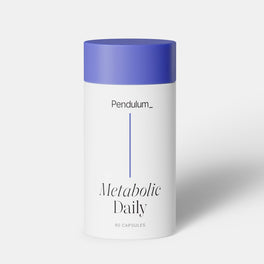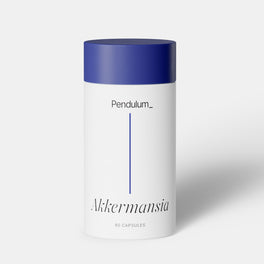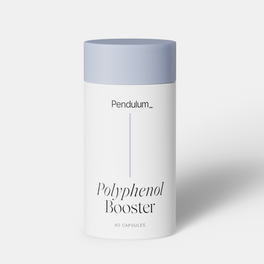Looks like your
cart is empty

Metabolic Daily
Improve metabolism

Akkermansia
Improves gut health

Polyphenol Booster
Increase antioxidants to protect cells
Stay in touch about special discounts, nutrition tips and additional education.
Looks like your
cart is empty

Improve metabolism

Improves gut health

Increase antioxidants to protect cells
In celebration of National Women's Health and Fitness Day on September 27th, let's take a moment to appreciate the remarkable vaginal microbiome. Yep, similar to the gut microbiome, women have a vaginal microbiome composed of various microorganisms, including bacteria and fungi, which have evolved to protect the female reproductive system. The composition of the vaginal microbiome can vary from person to person, and it undergoes changes throughout a woman's life, with significant shifts during puberty, menstruation, pregnancy, and menopause.
Relatively uncharted territory in the realm of microbiome research, the vaginal microbiome deserves recognition for its daily contributions to women's well-being. At its heart, this microbiome is primarily nurtured by Lactobacilli, a genus of gram-positive, anaerobic bacteria that primarily includes L. crispatus, L. iners, L. jensenii, and L. gasseri. Lactobacilli employ a multifaceted approach to maintain a healthy vaginal environment, including…
Lactobacilli create lactic acid, which helps maintain an ideal pH level between 3.8 and 4.5. This acidity serves as a natural defense against potential pathogens, making it a rough metric for the presence of protective bacteria in the vaginal microbiome. In addition, the Lactobacilli bacteria occupy space on the vaginal wall, effectively crowding out other harmful pathogens.
Lactobacilli produce bacteriocins, which serve as the body's natural antibiotics, further inhibiting the growth of disruptive bacteria. Lactobacilli also play a pivotal role in keeping inflammation at bay in the genital tract.
Some women may have a mixed population of bacteria, which may include various Lactobacillus species along with other non-Lactobacillus bacteria. This diversity can be stable and healthy for some people.
However, a deficiency of Lactobacilli in the vaginal microbiome can lead to a state known as vaginal dysbiosis in which there is an increase in bacterial diversity, providing fertile ground for disruptive microbes such as Gardnerella, E. coli, or Mycoplasma to thrive.
Unfortunately, much like the gut microbiome, the vaginal microbiome is not solely inhabited by protective microbes. Pathogenic bacteria and fungi responsible for vaginal infections are also part of this microbiome. When the vaginal microbiome experiences disruption, it paves the way for these harmful microbes to flourish. The most common vaginal infection, bacterial vaginosis, is characterized by high bacterial diversity and an abundance of disruptive bacteria. Dysbiosis can also trigger other infections such as yeast infections, aerobic vaginitis, and cytolytic vaginosis. The study of the vaginal microbiome through testing can provide better care for those affected and contribute to ongoing research for improved understanding and treatment of these conditions.
Recent research has unveiled groundbreaking insights into the role of the vaginal microbiome beyond its immediate environment. Beneficial bacteria like Lactobacilli in the vaginal microbiome can provide protection against various health concerns. Conversely, disruptive microbes can create an environment conducive to the entry of other infectious microorganisms, increase inflammation, and hinder immune responses.
Vaginal dysbiosis has been associated with the risk of STIs such as chlamydia, gonorrhea, trichomoniasis, herpes, HPV, and HIV as well as pelvic inflammatory disease, fertility issues including failed IVF cycles, pregnancy complications such as miscarriage, preterm birth, neonatal problems, and preeclampsia, and gynecological cancers such as ovarian, cervical, or endometrial cancer.
Much like different blood types, research has identified five general categories of the vaginal microbiome, known as "Community State Types" (CSTs). These CSTs vary in their level of protection and propensity for specific symptoms or health risks. However, unlike blood types, people can transition between CSTs. Four of these types are dominated by specific species of Lactobacilli, including Type 1: Lactobacillus crispatus, Type 2: Lactobacillus gasseri, Type 3: Lactobacillus iners, and Type 5: Lactobacillus jensenii.
You might notice that Type 4 is missing from that list. People without a dominant species of Lactobacilli are categorized as Type 4.
Of course, other factors can influence the vaginal microbiome, including hormone changes during the menstrual cycle, pregnancy, and menopause, as well as sexual activity and hygiene practices. In addition, taking antibiotics can kill beneficial Lactobacillus species and allow pathogenic bacteria to flourish, leading to conditions like the aforementioned bacterial vaginosis.
As you can see, although it is often overlooked in the study of human microbiomes, the vaginal microbiome is a powerhouse of women's health. On this National Women's Health and Fitness Day, we celebrate the intricate role it play in women's health and the profound impact beyond the vaginal realm. Understanding and appreciating the vaginal microbiome is not just a step towards healthier living but also a key to unlocking numerous insights into female health and well-being.